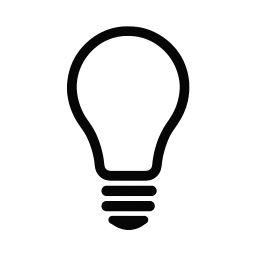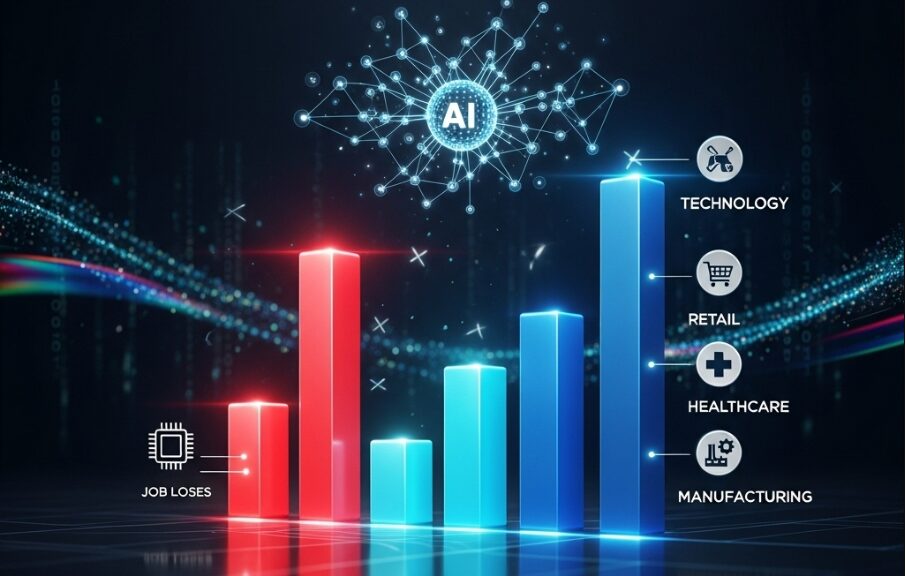A Transformative Shift in AI Job Displacement
In July 2025, artificial intelligence (AI) drove over 10,000 job cuts in the U.S. alone, ranking it among the top five causes of layoffs, according to a Challenger, Gray & Christmas report. Globally, 77,999 tech jobs were lost to AI in 2025, averaging 491 daily, as noted in posts on X. With projections estimating up to 300 million jobs could be displaced worldwide by 2030, per Goldman Sachs, AI job displacement is no longer a distant threat but a present reality. This article explores AI’s impact on employment, balancing its potential to boost productivity against the risks of widespread job losses and workforce disruption.

The Philosophy Behind AI Job Displacement
AI job displacement stems from automation’s ability to handle repetitive, data-driven tasks with unprecedented efficiency. Generative AI tools, like those powering chatbots and coding platforms, are reshaping industries by automating tasks in software development, data entry, and customer service. The World Economic Forum’s 2025 Future of Jobs Report projects 92 million roles could be displaced by 2030, though 78 million new jobs may emerge in AI-related fields like data science and cybersecurity. McKinsey’s 2023 analysis predicts AI could add $13 trillion to global GDP by 2030, driven by labor substitution and innovation, but at the cost of up to 30% of current U.S. work hours being automated. These shifts aim to enhance productivity but challenge workers to adapt swiftly to new skill demands.
Impacts on Workers and Industries
AI job displacement is hitting hardest in sectors with routine tasks. Bloomberg’s 2025 research shows 53% of market research analyst tasks and 67% of sales representative tasks are automatable, compared to just 9% for managerial roles. In 2023, AI caused 3,900 U.S. job losses (5% of total layoffs), affecting roles like copywriting and media, per Challenger, Gray & Christmas. A 2024 FlexJobs survey found 34% of U.S. workers fear AI-driven job loss within five years, with 48% viewing it as a threat to job security. Meanwhile, companies like Microsoft, reporting 30% AI-written code, cut over 6,000 jobs in 2025. However, AI adoption is creating roles, with a 41% year-over-year increase in demand for AI specialists, per the World Economic Forum.
Risks to Long-Term Workforce Stability
AI job displacement poses significant risks, particularly for lower-wage and entry-level workers. McKinsey’s 2023 report notes workers earning under $38,200 annually are up to 14 times more likely to need new occupations by 2030, disproportionately affecting women and minorities. The World Bank estimates 77% of jobs in China are susceptible to automation, while Latin America faces 4.5 million job losses by 2027, mainly in call centers. A 2025 CBS News report highlights service disruptions, like delayed customer support, as companies downsize human staff. Critics warn that without robust reskilling—120 million workers need retraining by 2028, per McKinsey—unemployment could spike, with global rates potentially hitting 7.8% in 2025, up from 6.3% in 2023.
Industry-Wide and Societal Implications of AI Job Displacement
AI job displacement is reshaping industries beyond tech. Retail faces 80,000 job cuts in 2025, up 250% from 2024, partly due to AI-driven automation, per Challenger, Gray & Christmas. Conversely, AI is boosting sectors like healthcare, where 38% of medical providers use AI for diagnostics, and manufacturing, projected to gain $3.8 trillion by 2035, per Accenture. Public sentiment is divided: a 2024 Forbes Advisor survey shows 64% of businesses expect AI to enhance productivity, yet 14% of workers have already experienced displacement. Posts on X reflect fears of a “jobless future,” though experts like PwC argue AI’s $15 trillion GDP contribution by 2030 will create 97 million jobs, offsetting losses. The challenge lies in bridging the skills gap to ensure equitable access to these opportunities.
A Disruptive but Opportunity-Filled Future for AI Job Displacement
AI job displacement is transforming work at an unprecedented pace, with 2025 data showing thousands of jobs lost monthly to automation. While offering immense economic potential—$19.9 trillion globally by 2030, per IDC Research—it risks exacerbating inequality without proactive reskilling. As industries adapt, the balance between job losses and new roles in AI-driven fields will shape the workforce’s future. Policymakers, businesses, and workers must collaborate to navigate this shift, ensuring AI job displacement becomes a catalyst for innovation rather than a barrier to economic stability.
Advertisement
Sources:
- CBS News: Reports 10,000+ U.S. job cuts due to AI in July 2025. https://www.cbsnews.com/news/ai-job-losses-2025-layoffs-report/
- World Economic Forum: Projects 92M jobs displaced, 78M created by 2030. https://www.weforum.org/publications/future-of-jobs-report-2025/
- McKinsey & Company: Estimates 400–800M global job displacements by 2030. https://www.mckinsey.com/mgi/our-research/generative-ai-and-the-future-of-work-in-america
- Goldman Sachs: Predicts 300M jobs at risk, 7% GDP boost by 2033. https://www.gspublishing.com/content/research/en/reports/2023/03/26/Generative_AI_Economic_Impact.html
- Accenture: Forecasts $3.8T in manufacturing gains by 2035. https://www.accenture.com/us-en/insights/industry-x/artificial-intelligence-manufacturing
- FlexJobs: 34% of U.S. workers fear AI job loss by 2029. https://www.flexjobs.com/blog/post/future-of-work-report-2024/
- PwC: 5.1% of financial services jobs required AI skills in 2024. https://www.pwc.com/gx/en/issues/artificial-intelligence/ai-jobs-barometer.html








Leave a Reply